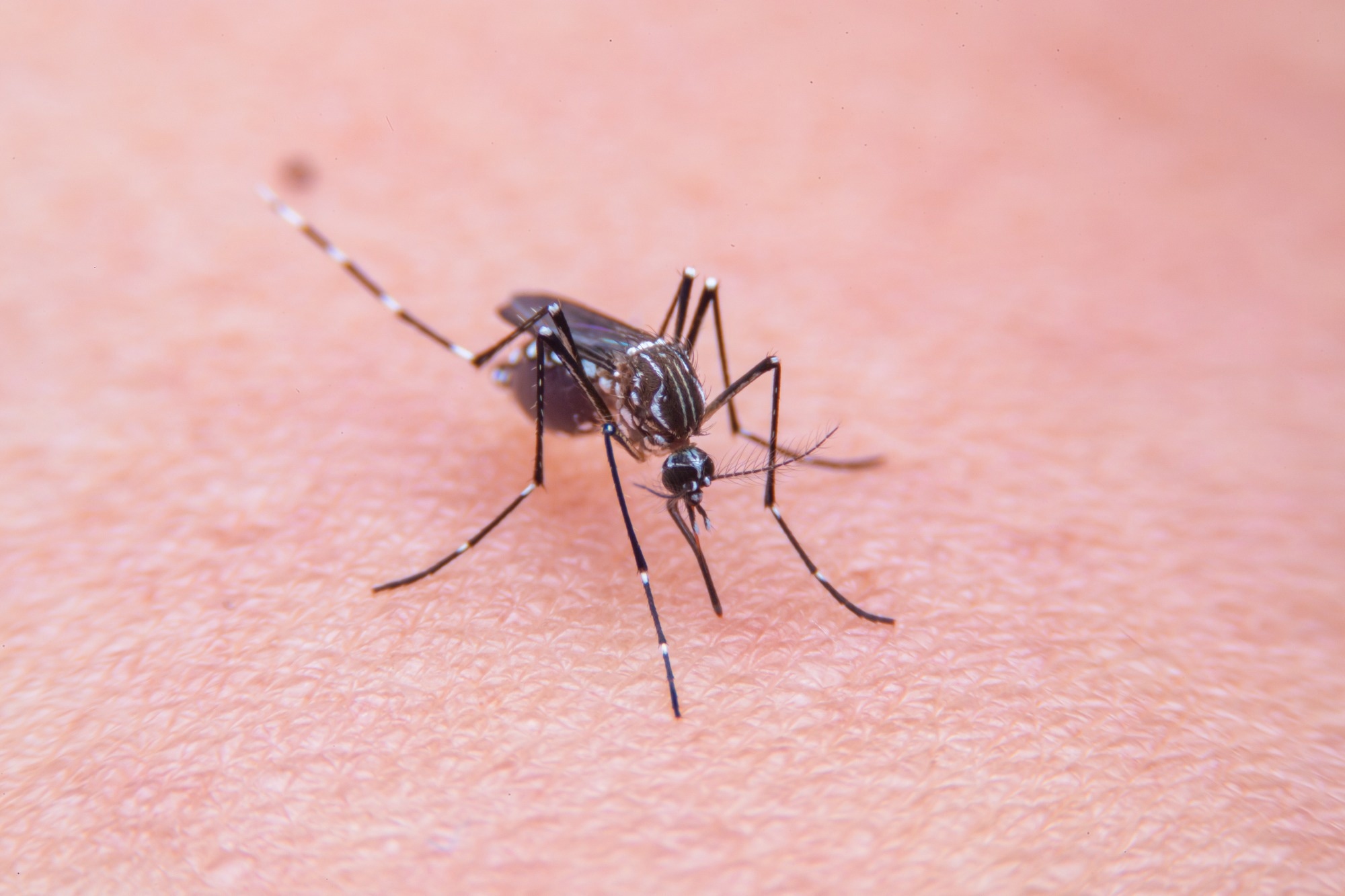Scientists warn that unpredictable climate swings could bring mosquito-borne disease outbreaks years earlier than expected, urging governments to act now on surveillance and preparedness.

Study: Climate variability amplifies the need for vector-borne disease outbreak preparedness. Image credit: AU USAnakul/Shutterstock.com
A recent PNAS study adopted a long-term perspective. It demonstrated that internal climate variability (ICV) is a significant source of uncertainty about the climate's suitability for vector-borne diseases (VBD) transmission.
Uncertainties in climate projection and the risk of vector-borne diseases
Climate change is altering the dynamics of VBDs. For example, the population of Aedes mosquitoes, which transmit dengue, is increasing in Europe and North America. In 2023, local dengue transmission was reported for the first time near both Los Angeles and Paris, and even in the United Kingdom, the Aedes albopictus has been detected. Scientists combine climate projections with vector and pathogen dynamics to quantify the risks of future outbreaks.
Three primary sources of uncertainty affect climate projections produced by general circulation models (GCMs). The first stems from model uncertainty driven by differences in the formulation of GCMs. It is often quantified using multimodel ensembles. The second source of uncertainty concerns scenarios, e.g., future greenhouse gas (GHG) emissions pathways. It is analyzed by running GCMs under different scenarios. Finally, ICV could cause aleatory uncertainty due to the climate's unpredictable nature. ICV concerns the natural fluctuations that occur regardless of external factors, such as GHG emissions.
About the study
In existing research, ICV is often neglected while considering model and scenario uncertainty in climate-VBD studies. The current study, in the context of future VBD risks, partitioned climate uncertainty and exhibited the potential role of ICV in producing suitable climate conditions for future outbreaks. These outbreaks could occur sooner than expected under climate change alone.
Daily temperature projections for London between 2030 and 2080 were obtained, and recorded weather station temperature data for 2020 were gathered. Next, existing temperature-suitability models for dengue transmission caused by Ae. albopictus and Ae. aegypti were combined with temperature data to project the annual number of days suitable for transmission.
Uncertainty in projections was divided into contributions from ICV, model uncertainty, and scenario uncertainty. Cubic polynomials were fitted to estimate the extent of ICV and single-model and scenario ensemble means. The focus was on average uncertainty due to ICV over different models and scenarios.
Study findings
ICV was noted to drive a significant part of the uncertainty in the number of suitable days. This was notably true even decades into the future. For example, in 2080, 38% of the annual mean temperature's prediction interval (PI) could be attributed to ICV. ICV accounted for 48% of the PI for the days suitable for transmission. These effects were consistent with other studies that assessed uncertainty in nonlinear, climate-dependent effects.
Five other cities were selected for equivalent analyses to ensure the robustness of the findings. These cities are not currently deemed to be at high risk of dengue transmission but may be at risk in the future. The suitability of transmission using recorded 2020 weather data was also evaluated.
The exact uncertainty contributions between cities showed heterogeneity, which was expected given heterogeneity in climate conditions. However, the common theme was the substantial contribution of ICV in driving the proportion of uncertainty in transmission-suitability projections. ICV-associated year-to-year temperature fluctuations led to the acceleration of heightened suitability. For example, on considering model and scenario uncertainty alone in a model of dengue transmission by Ae. albopictus in London, the annual risk of greater than or equal to 120 days of suitability first exceeds 5% in 2047, relative to 2038 when ICV is also factored in.
Conclusion
The current study demonstrated that ICV may lead to suitable climate conditions for VBD transmission and recommended its inclusion alongside model and scenario uncertainty when generating climate-sensitive VBD projections.
The authors emphasized that this has direct public health implications: proactive preparedness is needed, including vector surveillance at points of entry, breeding site control, clinical testing capacity, public information campaigns, and outbreak response planning.
A few assumptions were made here, which could be relaxed in future studies. More complex methods could be employed to relax assumptions regarding the fitting of cubic polynomials to estimate ensemble mean values, uniformly weighting the climate scenario-model pairs when partitioning uncertainty, and assuming that the extent of ICV is time-invariant.
The study also noted that additional climate factors (e.g., precipitation and humidity) and non-climate-related factors (e.g., human population density and intervention strategies) should be incorporated in future models to give more policy-relevant projections.
Download your PDF copy now!
Journal reference:
- Hart, S.W. et al. (2025). Climate Variability Amplifies the Need for Vector-borne Disease Outbreak Preparedness. Proceedings of the National Academy of Sciences. 122: e2507311122.. https://doi.org/10.1073/pnas.2507311122. https://www.pnas.org/doi/10.1073/pnas.2507311122